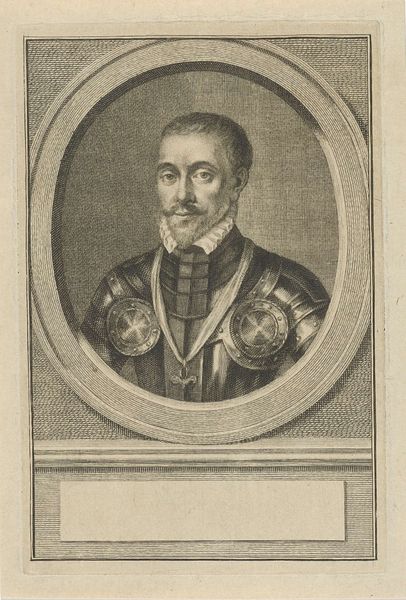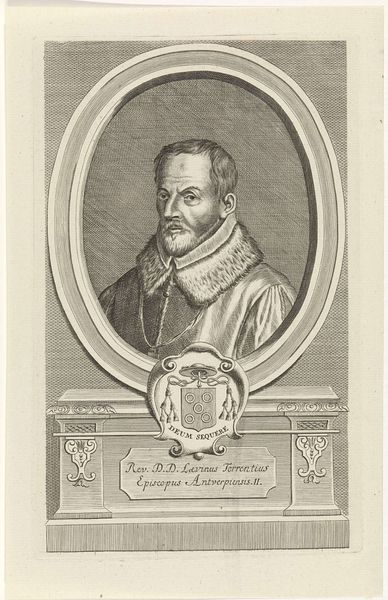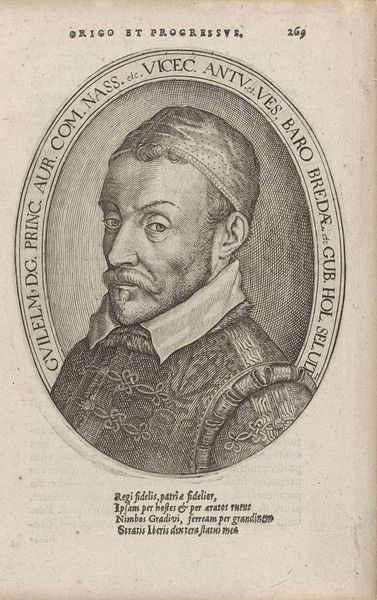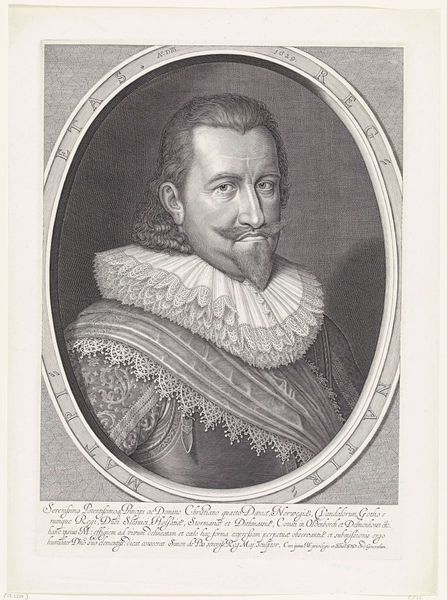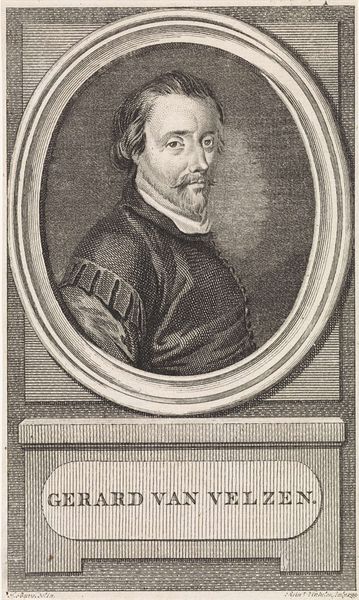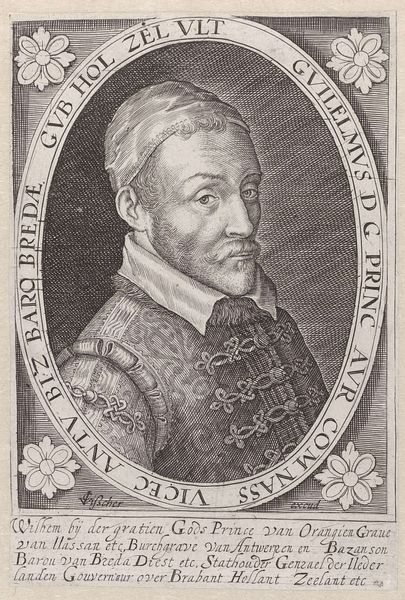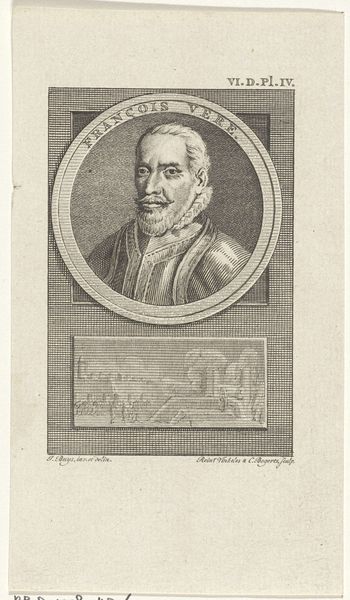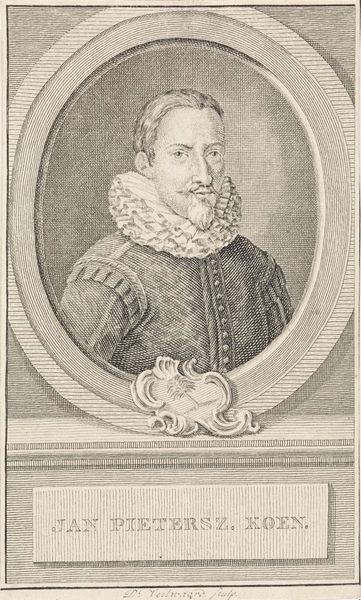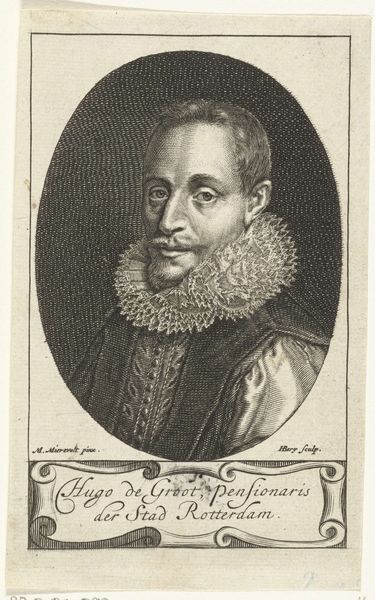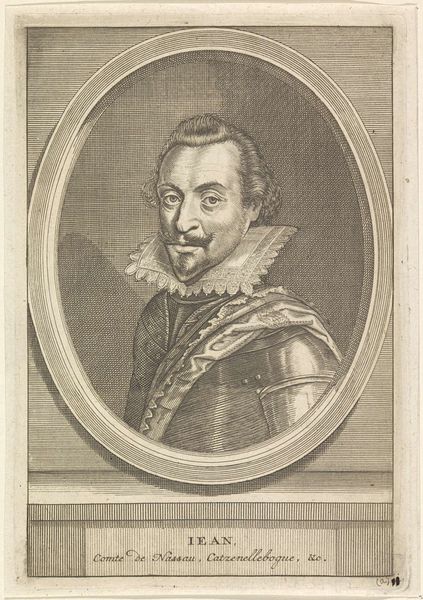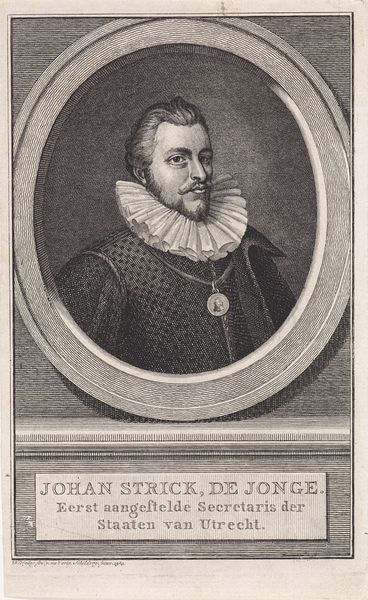
Dimensions: height 179 mm, width 114 mm
Copyright: Rijks Museum: Open Domain
Editor: Here we have Jan Punt's "Portret van Willem I, prins van Oranje" from 1786, an engraving on paper. It’s quite detailed, the subject’s clothing has so many patterns etched in it, almost overwhelming the figure himself. How do you interpret this work? Curator: Well, as a materialist, my immediate focus is on the engraving process itself. Consider the labour involved in creating such detail using only lines and carefully controlled pressure. Each stroke represents hours of skilled work and speaks to the value placed on artisanal production at the time. It was also a reproducible format; copies could disseminate throughout the land. Editor: So, it’s less about *who* it depicts, Willem of Orange, and more about how the image was made and its function in society? Curator: Precisely. The very act of creating an engraving, a reproducible image, points to the need for disseminating Willem's image and his ideals to a wider audience. Think about the role this portrait played in shaping public opinion, building a consensus around Willem as a leader. Can we also consider how this cheap mode of dissemination of portraits started a fashion for keeping pictures of important personalities in one’s house? Editor: That makes a lot of sense. So, understanding the "how" – the material production and the act of circulating these copies - gives us a crucial window into the artwork's historical and cultural impact. I didn't initially think of it that way! Curator: It's easy to get caught up in the figure depicted. But digging into the means of production lets us ask questions about labour, access, and the flow of information. Hopefully we can explore more with this material focus!
Comments
No comments
Be the first to comment and join the conversation on the ultimate creative platform.
